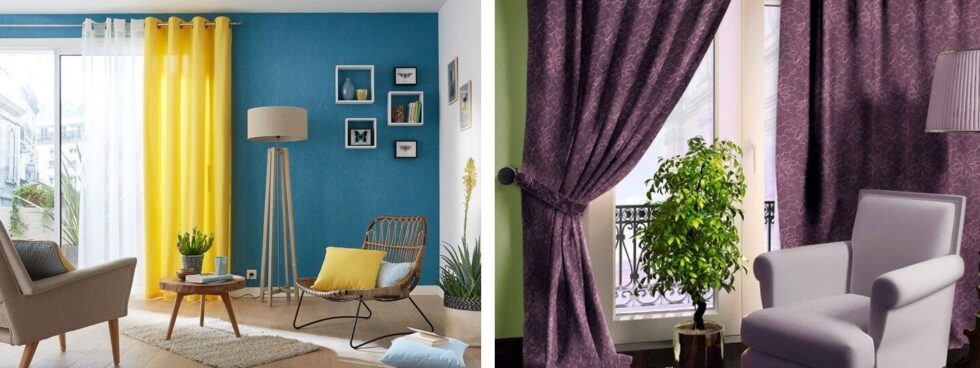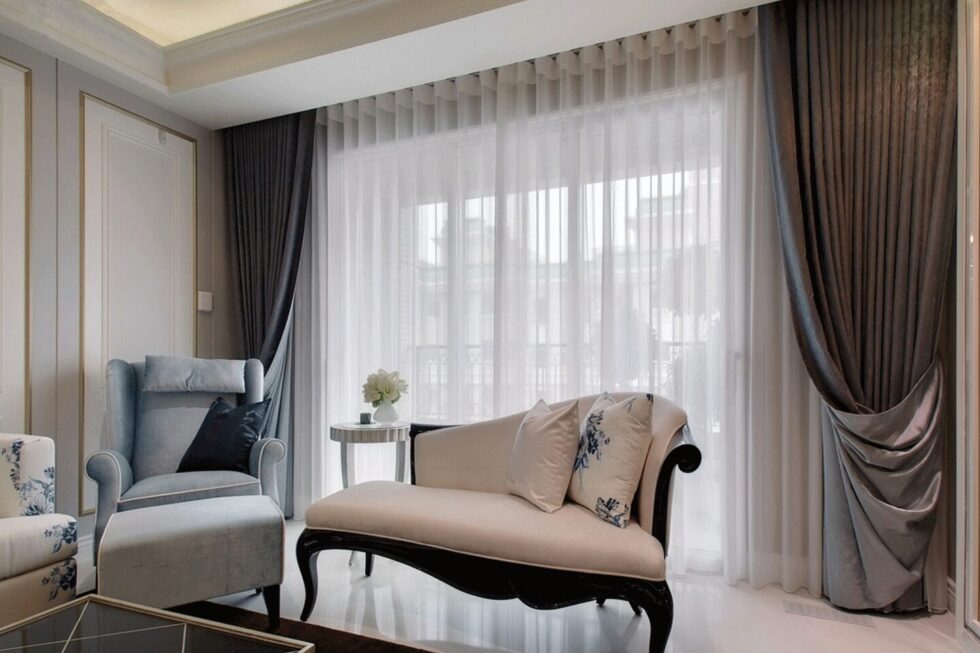How to choose high-quality curtains that will last for years

High-quality curtains are more than a decorative detail – they are an essential investment in comfort, light control, and the long-term appeal of your home. The right choice can protect furniture from sun damage, improve insulation, and even influence the room’s acoustics. When making a purchase, many people focus only on the pattern or color, but real quality comes from a combination of fabric durability, professional tailoring, and well-selected hardware. In Germany, the market offers a variety of options from budget-friendly ready-made curtains to bespoke designer models. By knowing what factors truly matter, you can ensure that your curtains will not only look beautiful but also remain functional for many years. A detailed guide on this topic is provided by G.business.
Fabric choice and durability
The choice of fabric will largely determine how long your curtains keep their shape and color. Natural materials like linen and cotton have a timeless, premium look and are environmentally friendly, but they may require more delicate care and can be prone to shrinkage. Synthetic fabrics such as polyester or acrylic are more resistant to fading and wrinkles, making them a practical choice for sunny rooms or high-use areas. Blended fabrics offer a balance, combining the elegance of natural fibers with the durability of synthetics. In addition to the type of fiber, you should check the density of the weave and whether the material has been treated with a protective finish against UV rays and stains. This attention to detail will help ensure the curtains withstand daily wear and sunlight exposure without losing their appeal.
Recommended fabrics:
- Linen – breathable and natural, ideal for airy interiors, but requires gentle washing.
- Cotton – soft and versatile, though it may shrink after washing.
- Polyester – durable, easy-care, and fade-resistant.
- Viscose – smooth with a sophisticated sheen, suitable for formal rooms.
- Jacquard – dense and decorative, perfect for adding a textured look.
Density and light permeability
Curtain density is not just a matter of aesthetics – it directly affects privacy, energy efficiency, and comfort. Thick fabrics can help maintain indoor temperatures by blocking heat in summer and retaining warmth in winter, which is especially relevant for older German buildings with less insulation. Bedrooms and home cinemas often require blackout fabrics that block up to 100% of incoming light, while living rooms and kitchens may benefit from semi-transparent materials that filter light softly without darkening the space. The orientation of your windows is also key: south-facing rooms with direct sunlight demand heavier fabrics to prevent fading of upholstery and flooring, while north-facing rooms might feel more inviting with lighter curtains that maximize natural light. By matching density to room function and exposure, you can balance both practicality and style.
Light permeability types:
- Blackout – total light blocking, ideal for bedrooms and home cinemas.
- Dim-out – partial light reduction (60–80%), good for studies and living rooms.
- Semi-transparent – diffused light, suited for kitchens or hallways.
- Sheer fabrics – purely decorative, offering no shading.
Tailoring quality and hardware
Even the finest fabric can look cheap if the sewing is subpar or the hardware is not up to standard. Professional tailoring ensures straight seams, secure hems, and the correct hanging length, which not only enhances the appearance but also prevents uneven wear over time. Hardware such as hooks, grommets, and curtain tapes should be chosen with the weight of the fabric in mind – a heavy velvet drape needs a robust rod and reinforced fixings, while lightweight sheers can be hung on more delicate systems. Poor-quality hardware may bend, rust, or break within months, making it a false economy. When purchasing, examine the stitching closely, test the strength of grommets, and make sure curtain tapes are firmly attached. Investing in strong, well-fitted hardware will prevent sagging and ensure smooth operation for years.
What to check before purchase:
- Even, secure stitching with no loose threads.
- Strong grommets or hooks made of corrosion-resistant material.
- Reinforced curtain tape for heavy fabrics.
- Hardware weight rating that matches your chosen fabric.
- Replaceable components for easy maintenance.
Colorfastness and maintenance
Curtains are constantly exposed to sunlight, dust, and everyday wear, so their ability to retain color is critical. High-quality fabrics are treated with UV-protection finishes that slow fading, especially important in bright rooms or in south-facing apartments. Before purchasing, check the care instructions: some curtains can be machine washed, while others require professional dry cleaning to maintain their shape and color. Easy-care fabrics like polyester blends may only need occasional gentle washing, while natural fibers often require more attention. Proper maintenance will not only keep curtains looking fresh but also extend their life significantly, saving you the expense of frequent replacements.
Maintenance tips:
- Always follow manufacturer’s care guidelines.
- Use mild detergents to avoid fiber damage.
- Dry away from direct sunlight to prevent color fading.
- Iron at appropriate settings for the fabric type.
- Schedule periodic professional cleaning for delicate or structured curtains.
Measurements and installation
Accurate measurements are essential to achieving a professional look and ensuring full functionality. Curtains should be wide enough to cover the window completely and long enough to create an elegant drape. As a general rule, aim for curtains that are 15–30 cm longer and wider than the window opening. The gathering ratio – usually 1.5 to 2 times the width of the window – will create a fuller appearance. Installing the rod 10–20 cm above the window frame can make ceilings appear higher, a trick often used by interior designers. In Germany, where many apartments have tall windows or non-standard sizes, custom-made curtains may be the only way to achieve a perfect fit.
Measurement guidelines:
- Height: from rod to floor, with 2–3 cm clearance.
- Width: window width × gathering ratio.
- Rod placement: 10–20 cm above the window for added height.
- Rod extension: 15–25 cm beyond each side of the frame.
- Custom tailoring for bay or unusually shaped windows.
Comparison of popular curtain types
Choosing the right curtain style depends on the room’s function, your personal taste, and the atmosphere you want to create. Classic drapes suit almost any home but require more fabric and space. Roman shades offer a clean, compact look but are size-limited. Roller blinds are easy to install and come in countless designs, yet they lack the luxurious presence of fabric curtains. Japanese panels are great for minimalistic or modern spaces and can also be used as room dividers. French curtains add elegance but are high-maintenance, making them better for formal settings than busy households.
| Curtain type | Advantages | Disadvantages | Best for |
|---|---|---|---|
| Classic drapes | Timeless, versatile | Requires more fabric | Living rooms, bedrooms |
| Roman shades | Neat, space-saving | Size limitations | Kitchens, studies |
| Roller blinds | Easy installation, variety | Less decorative | Offices, balconies |
| Japanese panels | Minimalist, can divide space | Not for small windows | Modern interiors |
| French curtains | Elegant, luxurious | High-maintenance | Formal living rooms |
Popular brands and prices in Germany
In Germany, you can find both international and local brands that cater to different budgets and styles. Premium brands like Togas offer high-quality fabrics and refined designs starting from €80 per panel, while IKEA provides affordable ready-made options from €20. Mid-range options such as Witerra and Haft offer a balance of durability and style at prices between €30 and €50. When comparing prices, remember to account for additional costs like hardware, lining, and professional installation.
Common mistakes when choosing curtains and how to avoid them
Even the most expensive and beautiful curtains can quickly lose their appearance or become impractical if common mistakes are made during purchase. Often, the issue is not with the fabric quality but with incorrect measurements, mismatched curtain rods for the fabric weight, choosing the wrong light permeability, or skipping a protective lining. Many buyers focus solely on appearance, overlooking practical factors such as colorfastness, ease of maintenance, and compatibility with the room’s style. To ensure curtains last for years, it is important to consider both aesthetic and technical aspects while avoiding the most frequent errors.

Most common mistakes:
- Incorrect measurements – curtains that are too short or narrow fail to block light effectively.
- Choosing based on looks only – attractive fabric may fade quickly or be hard to maintain.
- Too heavy fabric for a weak rod – leads to hardware damage.
- No lining – speeds up fading and wear.
- Wrong gathering ratio – curtains look flat and unappealing.
- Ignoring the room’s style – causes visual disharmony.
- Saving on hardware – cheap hooks and tapes break quickly.
How to avoid these mistakes:
- Measure with the gathering factor and floor length in mind.
- Choose fabric based on functionality and room lighting.
- Ensure the rod can support the curtain’s weight.
- Use a lining to protect from sunlight.
- Follow the manufacturer’s care recommendations.
- Match the color and style to the interior.
- Invest in high-quality hardware and accessories.
How to extend curtain lifespan
Curtains can last for many years if cared for properly. Regular maintenance not only preserves their beauty but also prevents issues like mold, fading, or fabric weakening. Use a vacuum cleaner with a soft brush attachment to remove dust once a month, and wash or dry clean them twice a year depending on the fabric type. Adding a lining can protect against sun damage and help maintain the fabric’s structure. Seasonal rotation – using heavier curtains in winter and lighter ones in summer – can also reduce wear and prolong the life of both sets.
Stay connected for news that works — timely, factual, and free from opinion — and insights that matter now: What are the 10 proven tips to remove bad smells at home